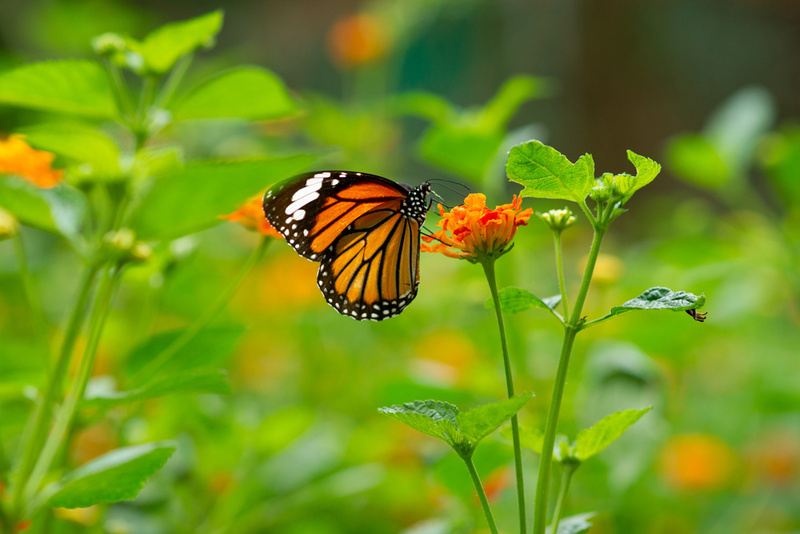
Add a Butterfly Garden to Your Landscape
Attracting butterflies to your Florida landscape is easy. Step One: find out which butterfly species inhabit your region. Step Two: add plants that provide food for those species. You may need two plants: one for the caterpillar and one for the adult.
Have you always wanted a butterfly garden but gotten stuck on the how-tos of adding one to your Florida landscape?
A butterfly garden can be whatever you make it: a concentration of plants in one area of your yard, individual plants placed randomly across your landscape, or even a collection of plants in containers on a porch.
The key to a successful butterfly garden—or to butterfly-friendly landscaping—is knowing what butterflies you want to attract, selecting the correct plants, and creating the garden in a sunny location.
Know the Butterflies in Your Area
Know the butterflies that inhabit your region or migrate through your region. Butterfly associations and online resources can provide that information.
For example, butterflies of Central Florida include Swallowtails, Whites, Sulphurs, Hairstreaks, Brushfoots, Leafwings, and Blues.
When you know the butterfly species in your area, you can then select the plants that provide food for those species—both for the caterpillar stage and the adult butterfly stage.
Native caterpillar foods for Central Florida butterflies include wild chervil, hoptree, spicebush, tulip tree, pawpaw, peppergrass, sea rocket grasses, shy leaf, sticky vetch, pencil flower, Elliott’s milk pea, glasswort, partridge pea, mistletoe, oaks, some foxgloves, and some toadflaxes.
Pick the Right Food Plants
Pick plants that will provide food for butterflies in both their young and mature forms. Choose larval host plants that attract females and provide food for larvae, and flowering plants that will provide nectar for adults.
Flowers bloom at different times through the year. Select butterfly-attracting plants with a variety of bloom times to create a landscape that enjoys butterfly visitors throughout the year.
Pick plants with flowers that butterflies can access easily. Blooms that are shallow can be accessed by all butterflies, versus blooms with long tubes whose nectar can only be reached by butterflies with a long proboscis (the mouthpart that sucks the nectar).
Consider Sun, Shade, and Water
When a butterfly garden contains plants that grow to varying heights, it provides sheltering layers where butterflies can hide and rest. It also creates microclimates that will attract assorted butterflies.
Sheltering layers can also be created by installing an arbor or pergola to support flowering vines. The vines and their blooms provide food for caterpillars and adults.
In planning the butterfly garden location in your landscape, consider that most butterflies, being cold-blooded insects, need sunshine to warm themselves. Locations with six or more hours of sunlight per day are what the North American Butterfly Association recommends for butterfly gardens.
When it comes to water, butterflies do not need much. A puddle is enough to sustain them. Provide a bird bath or even just an area of bare ground supplied with a soaker hose.
Garden Care and Maintenance
Maintain butterfly-attracting plants so that they consistently provide what butterflies need: food and shelter. Fertilize and water them as needed.
Do not use insecticides in your butterfly garden. Butterflies are insects, and it will kill them. Be sparing in your use of pesticides. If you must use a pesticide, apply it locally (i.e. targeted on or around individual plants). Do not apply it indiscriminately across all plants. Butterflies are sensitive to pesticides. Consider employing beneficial insects instead.
Visit the North American Butterfly Association’s website as well as Florida regional butterfly association websites for more information.
#butterflyplants #floralawn #landscapedesign #centralflorida #lakeland